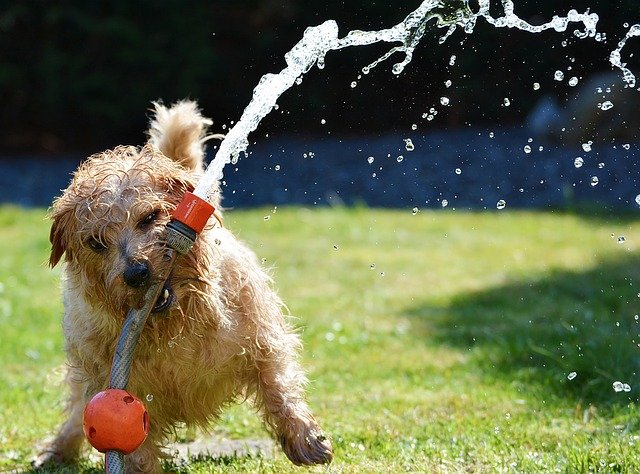Spring has officially begun for many of us, which means warmer weather and brighter days, but it also means that many of those old pests are going to be coming back to haunt us and our family, including our pets. If you’re trying to be mindful of your dog’s health then you should take care to prepare for flea and tick season. Here, we’re going to look at some of the tips that can help keep your pet happy, healthy, and free from those minuscule menaces.

The real danger of fleas and ticks
Fleas and ticks can be irritating to dogs, causing them to scratch and generally express some discomfort. However, we don’t take pains to protect our four-legged familiars from these pests just for the sake of their comfort. For one, dogs can be allergic to both fleas and ticks, and these allergies can cause irritation, hair loss, and more severe symptoms if not quickly treated. Ticks are typically the more dangerous of the two pests, as well, as they carry a range of diseases, including Lyme disease, as well as causing anaemia by drinking the blood of the host that they latch onto. For that reason, you should take both flea and tick seasons very seriously, for your dog’s sake.
Talk to the vet about your options
The first thing you should aim to do is prevent those pests from becoming a problem in the first place. Your vet will be able to recommend a wide variety of treatments to prevent fleas and ticks from finding their way onto your pooch in the first place, which might include topical treatments to go directly onto their skin and coat or shampoos that you can wash them with, for instance. Make sure that you carefully check the label for whether it’s for cats or dogs. Cat pest protective products are never to be used on dogs unless the label says that it is for both species of animal.
Protection they can take with them
If you want a form of flea and tick prevention that can keep them safe while you’re out and about, such as when they are in the garden or when you are taking them on a big walk, then you might want to look at the accessories that they could wear or take with them. A flea and tick collar for dogs can be put on their neck, releasing anti-pest ingredients periodically over the time that they wear it to repel them within a day and then continuing to shield the dog from that point onwards for up to eight months. If you’re concerned about taking your dog outside, then this might be the portable protection you need.

Keep your grass short
If you have grass in your garden, then you should be sure to cut it short. In general, you should avoid taking your dog to any places that have long grass or a lot of green debris. Ticks and fleas typically hang around in the undergrowth, waiting for the right host to pass by. However, that doesn’t mean that high grass is the only place that they are likely to be. Any place where there is sufficient shade, the young of these parasites, also known as nymphs, are likely to be. Keeping your grass short is a good way to prevent the presence of a lot of pests in your garden, all the same, as the majority of them can’t live in direct sunlight.
Check them after going outside
Fleas cause a very itchy sensation, so it’s rarely difficult to tell when your dog might have them. However, you shouldn’t wait for that symptom before you take a closer look at them. When you’re grooming them in the evening or after coming in from a walk, it’s a good idea to use a good flea comb to run through their coat. While both pests are small, they should be invisible to the naked eye. If you see either of them, a flea and tick spray should be able to eliminate them immediately. If you find that a tick has latched on them, then you should keep an eye out on the most common symptoms of tick-borne diseases and take them to the vet, if you need to.
Keeping the home safe and clean
Pests such as fleas and ticks can live in clean homes as well as any other if the conditions are right. However, you can still get rid of them by making sure that you take care to clean out the areas that they are likely to nest. Washing your carpet regularly and vacuuming at least once a week should make sure that you’re able to keep out the immature fleas that tend to hang out in fabrics. Your soft furnishings such as throws and rugs can be prime nesting spots for these pests as well, so follow the same advice there. Otherwise, you might want to avoid clutter to give them fewer shaded places to hang out.

Keep in mind that flea and tick season can last all year
Although they are both typically more common and easier to find in the spring and summer, the truth is that fleas and ticks are pretty resilient so there is always something of a risk of encountering them. Fleas can hang around even until December depending on the weather, and ticks typically become active before the start of Spring, meaning that often you only have a couple of months where you can really afford to rest easy without fear of any parasites. As such, you should follow the more basic tips about inspecting your dog and clearing the environment all throughout the year.
Be sure to take the time to prepare with at least some of the flea and tick prevention methods as mentioned above. You should be especially diligent if your dog has allergies to fleas and ticks, which can result in a lot of discomfort if you allow pests to attack them.
